Q
How many litres of petrol does a Hyundai i10 hold?
The fuel tank capacity of the Hyundai i10 is 35 liters. This small car is popular in the Malaysian market for its affordability and flexibility in urban driving. The 35-liter fuel tank design meets the needs of daily commuting and short weekend trips. Usually, filling up a tank of RON95 gasoline (calculated at the current price of about RM2.05 per liter) costs around RM72, and the vehicle can achieve a range of 400-500 kilometers (depending on driving habits and road conditions).
It's worth noting that the 1.2L Kappa engine of the i10 uses multi-point fuel injection technology. The official combined fuel consumption is 5.1L per 100 kilometers. It is recommended that car owners regularly maintain the fuel system and check tire pressure to optimize fuel efficiency.
For Malaysian users, when choosing a compact car like the i10, in addition to the fuel tank capacity, they should also pay attention to its five-year unlimited-mileage warranty policy and low maintenance costs. These factors are more important in the long-term use of the vehicle than the single refueling volume. If you often drive long distances, you can consider adding the original fuel additive to keep the engine clean and further improve fuel economy.
Special Disclaimer: This content is published by users and does not represent the views or position of PCauto.
Related Q&A
Q
Hyundai i10 มีระบบเข้ารถแบบไม่ใช้กุญแจหรือไม่
Hyundai i10 บางรุ่นระดับสูงในตลาดมาเลเซียมาพร้อมระบบเข้ารถแบบไม่ใช้กุญแจ แต่การติดตั้งขึ้นอยู่กับปีและรุ่นของรถจึงควรสอบถามดีลเลอร์เพื่อยืนยันสเปกล่าสุด ระบบเข้ารถแบบไม่ใช้กุญแจช่วยปลดล็อกประตูอัตโนมัติเมื่อพกกุญแจอัจฉริยะ เพิ่มความสะดวกในชีวิตประจำวันโดยเฉพาะเวลาถือของหรือช่วงฝนตก โดยปกติจะทำงานร่วมกับระบบสตาร์ทเครื่องยนต์แบบปุ่มกด รุ่นพื้นฐานอาจยังใช้กุญแจแบบเดิม ในสภาพอากาศร้อนและฝนชุกของมาเลเซียควรตรวจสอบแบตเตอรี่กุญแจเป็นประจำและหลีกเลี่ยงวางกุญแจใกล้อุปกรณ์อิเล็กทรอนิกส์เพื่อป้องกันสัญญาณรบกวน รุ่นในระดับเดียวกันเช่น Perodua Axia และ Proton Saga ก็มีฟังก์ชันคล้ายกัน ผู้บริโภคสามารถเปรียบเทียบฟังก์ชันตามงบประมาณและความต้องการ หากเลือกซื้อ i10 มือสองควรตรวจสอบสเปกรถจากโรงงานเดิม เพราะบางคันอาจติดตั้งโมดูลเข้ารถแบบไม่ใช้กุญแจที่ไม่ใช่ของแท้ ความเสถียรและความปลอดภัยจึงต้องพิจารณาอย่างรอบคอบ
Q
Hyundai i10 มีฟังก์ชัน Stop Start หรือไม่
ใช่แล้ว Hyundai i10 บางรุ่นมาพร้อมเทคโนโลยี Stop Start ฟังก์ชันนี้ช่วยปิดเครื่องยนต์อัตโนมัติเมื่อรถจอดชั่วคราวเพื่อลดการใช้เชื้อเพลิงและการปล่อยไอเสีย เหมาะอย่างยิ่งกับการขับขี่ในเมืองมาเลเซียที่ต้องจอดบ่อย แต่การมีฟังก์ชันนี้ขึ้นอยู่กับปีและรุ่นของรถเพราะแต่ละรุ่นอาจมีอุปกรณ์แตกต่างกัน เทคโนโลยี Stop Start เป็นการออกแบบเพื่อสิ่งแวดล้อมที่เริ่มพบได้ทั่วไปโดยเฉพาะในเส้นทางที่รถติดช่วยลดการใช้เชื้อเพลิงได้จริง แต่บางคนอาจกังวลว่าการสตาร์ทรถบ่อยจะกระทบแบตเตอรี่และมอเตอร์สตาร์ท แต่อย่างที่ทราบ Hyundai ได้ปรับปรุงชิ้นส่วนให้แข็งแรงทนทานเพื่อรองรับฟังก์ชันนี้ หากสนใจควรสอบถามรายละเอียดรุ่นและอุปกรณ์กับดีลเลอร์ Hyundai ในพื้นที่ก่อนซื้อและสามารถทดลองขับเพื่อสัมผัสการใช้งานจริงของระบบสตาร์ท-สต็อป
Q
Does the Hyundai i10 lock automatically?
Regarding the question of whether the Hyundai i10 has an automatic locking feature, the availability of this function in the i10 depends on the specific model year and configuration. Newer i10 models generally come with a speed-sensitive automatic door locking system. When the vehicle's speed exceeds a certain threshold (for example, 20 km/h), the doors will lock automatically. This design is highly practical in the Malaysian market as it enhances driving safety, especially for city driving where traffic congestion is common. However, the early basic versions may require manual locking. It is recommended that owners refer to the user manual or check through the vehicle settings menu on the steering wheel.
Hyundai has been increasingly emphasizing safety technology in recent years. Compact cars like the i10 have gradually added features such as smart key systems and anti-theft alarms. If your vehicle does not have an automatic locking function, you can consider installing an original-factory safety module. In Malaysia's hot and humid climate with frequent rainfall, it's also important to regularly check the waterproofing of the door lock motors and wiring harnesses to prevent poor contact due to long-term use.
Q
Does the Hyundai i10 have automatic transmission?
Yes, the Hyundai i10 in the Malaysian market offers an automatic transmission option. Specifically, it is equipped with a 4-speed automatic transmission (4AT). This transmission is easy to operate and has relatively low maintenance costs, making it suitable for urban commuting needs. As an economical small car, the automatic version of the i10 is quite popular locally, especially among novice drivers or those who often encounter congested traffic conditions.
Apart from the transmission choice, the i10 is also well-known for its flexible handling and compact body, which are highly suitable for the narrow streets and parking situations in Malaysia. It should be noted that the configurations of the i10 may vary slightly from year to year. It is recommended to confirm the latest specifications with an authorized dealer before purchasing.
In addition, although an automatic transmission provides driving convenience, regularly changing the transmission fluid and maintaining good driving habits can extend its service life. This is also an important maintenance aspect that all owners of automatic - transmission cars should pay attention to.
Q
Is the Hyundai i10 a timing belt or chain?
The Hyundai i10 uses a timing chain instead of a timing belt. This design has more advantages in terms of durability and maintenance cost. Usually, it doesn't need to be replaced regularly like a timing belt. You only need to regularly check the chain tensioner and lubrication condition, which makes it suitable for the hot and rainy climate in Malaysia.
Compared with the timing belt, the timing chain is more resistant to high temperatures and wear. Its service life is basically the same as that of the engine, reducing the risk of engine damage caused by belt breakage for car owners. However, the chain may be a bit noisier than the belt during operation.
It's very important for Malaysian car owners to know the type of timing system in their vehicles. Generally, the timing belt needs to be replaced every 60,000 to 100,000 kilometers, while the chain significantly reduces the maintenance frequency and cost in this regard. It is recommended that car owners still follow the manufacturer's maintenance manual for regular inspections to ensure the long - term stable operation of the engine.
Q
Is the Hyundai i10 AMT or CVT?
In the Malaysian market, the Hyundai i10 offers the AMT (Automated Manual Transmission) as a transmission option instead of the CVT (Continuously Variable Transmission). Structurally, the AMT is similar to the traditional manual transmission, but it achieves automatic gear-shifting through an electronic control system. It features low cost and easy maintenance, making it suitable for city commuting. However, there might be a slight jerk during gear-shifting.
In contrast, the CVT achieves continuously variable transmission through a steel belt and conical pulleys. It provides better smoothness and generally has better fuel economy, but its manufacturing cost is relatively high. For Malaysian consumers, the i10 with the AMT version can balance economy and convenience, especially for users with limited budgets who value practicality. If you have higher requirements for driving smoothness, you can consider other models equipped with CVT. However, it's necessary to pay attention to the long-term maintenance costs and the compatibility with driving habits of different transmission types.
Hyundai optimizes its technology choices based on the vehicle's positioning and market demand. The AMT configuration of the i10 also reflects its consideration of the practicality of entry-level small cars.
Q
Is the Hyundai i10 automatic?
Yes, the Hyundai i10 offers an automatic transmission version in the Malaysian market. Specifically, it is equipped with a 4-speed automatic transmission (4AT). This small car is mainly focused on economy and practicality, making it suitable for city commuting. Its automatic version is easy to operate and has a reasonable fuel consumption, which is very suitable for the congested traffic environment in Malaysia. As a B-segment vehicle, the Hyundai i10 has a compact body but a reasonably designed interior space. It is equipped with basic safety features such as dual airbags and ABS. Meanwhile, some high-end versions may also offer convenient features like a touchscreen entertainment system, and its cost-effectiveness is quite competitive in the local market. It's worth noting that although the 4AT technology is relatively old, it has the advantages of low maintenance costs and high stability, which is a good choice for consumers with limited budgets who value durability. If you're looking for a smoother driving experience, you can also pay attention to CVT transmission models of peer competitors such as the Perodua Axia or Proton Saga, but you need to weigh according to your personal budget and needs.
Q
Where is the Hyundai i10 made?
The production base of the Hyundai i10 is mainly at the Hyundai Motor India factory in Chennai, India. This factory is one of Hyundai's global strategic production bases and specializes in producing small cars to meet the demands of the Asian and some European markets. For the Malaysian market, the i10 sold locally is usually imported from India. However, the specific source of the vehicles may vary depending on the year or configuration. It is recommended that consumers confirm the latest information through the official channels of Hyundai in Malaysia.
It's worth mentioning that the Indian factory adopts global production standards to ensure that the quality and craftsmanship of the i10 are consistent with those of the versions in other regions. This model is well-known for its flexible handling and fuel efficiency, making it particularly suitable for the urban road conditions in Malaysia.
Hyundai also offers a five-year unlimited-mileage warranty policy in the Southeast Asian market, providing additional protection for local consumers. If you're considering purchasing the i10, you can visit an authorized dealer to experience its 1.2L Kappa engine and intelligent connectivity features. These configurations are quite competitive among models in the same class.
Q
Which engine is the best for Hyundai i10?
The Hyundai i10 mainly offers a 1.2-liter Kappa four-cylinder naturally aspirated engine option in the Malaysian market. This engine delivers 82 horsepower and 118 Nm of torque. Paired with a 4-speed automatic or 5-speed manual transmission, it is highly suitable for urban commuting. Its low-speed torque tuning makes it more fuel - efficient in stop - and - go traffic, with an average fuel consumption of about 5.2 liters per 100 kilometers. Meanwhile, the maintenance cost is relatively low, making it a great choice for Malaysian consumers with limited budgets.
If you have higher requirements for power, you can consider the 1.0-liter T-GDI turbocharged version available in overseas markets. However, it should be noted that this version has not been officially introduced in Malaysia. When choosing an engine, it is recommended to give priority to local road conditions. The rainy climate and congested traffic in Malaysia are more suitable for the linear output of naturally aspirated engines. Turbocharged engines may increase the risk of carbon deposits during long-term low-speed driving.
In addition, the CVVD (Continuous Variable Valve Duration) system used in Hyundai's Smartstream engine technology can improve fuel efficiency. However, for daily maintenance, it is necessary to strictly follow the original manufacturer's recommendations and use low - ash oil to keep the engine in its best condition.
Q
Is the i10 3-cylinder or 4-cylinder?
The Hyundai i10 models available in the Malaysian market are equipped with a 1.2-liter Kappa four-cylinder engine instead of a three-cylinder configuration. This naturally aspirated engine uses multi-point fuel injection technology, with a maximum power of 87 horsepower and a peak torque of 120 N·m. It is paired with a 5-speed manual or 4-speed automatic transmission, which is suitable for urban commuting needs. For Malaysian consumers, the smoothness and durability of four-cylinder engines are usually more favored, especially in congested sections with frequent stops and starts. Compared with three-cylinder engines, they produce less vibration and have relatively stable maintenance costs. It's worth noting that in recent years, some small cars have adopted a three-cylinder design to reduce fuel consumption, but the four-cylinder structure still has advantages in terms of the linearity of power output and high-speed stability. It is recommended to make a choice based on your own driving habits and budget before buying a car. At the same time, you can refer to the actual test comparisons of vehicles in the same class by Malaysian automotive media, such as the performance differences between the three-cylinder Perodua Axia and the four-cylinder Proton Saga, to make a more comprehensive decision.
Latest Q&A
Q
Is Aruz auto or manual?
As a popular 7-seater SUV in the Malaysian market, the main competitors of the Perodua Aruz include models such as the Proton X70, Honda BR-V, and Toyota Rush. The Proton X70 has attracted many family users with its high cost-effectiveness and rich configurations. Meanwhile, the Honda BR-V has occupied a certain market share with its excellent fuel economy and brand reputation. The Toyota Rush, with its reliable durability and high ground clearance, is suitable for consumers who love outdoor activities. These models are in direct competition with the Aruz in terms of price, space, and functionality. However, the Aruz's advantages lie in its low maintenance cost and Perodua's extensive after-sales service network, which are quite appealing to Malaysian consumers who value practicality.
In addition, the Aruz is equipped with a 1.5L Dual VVT-i engine that balances fuel efficiency and power performance, making it suitable for both city driving and long-distance trips. On the other hand, its competitors have their own focuses. For example, the Proton X70 emphasizes a sense of technology, and the Honda BR-V highlights comfort. Consumers can choose the most suitable model according to their own needs.
Q
Who are Perodua Aruz competitors?
As a popular 7-seater SUV in the Malaysian market, the main competitors of the Perodua Aruz include models such as the Proton X70, Honda BR-V, and Toyota Rush. The Proton X70 has attracted many family users with its high cost-effectiveness and rich configurations. Meanwhile, the Honda BR-V has occupied a certain market share with its excellent fuel economy and strong brand reputation. The Toyota Rush, with its reliable durability and high ground clearance, is suitable for consumers who love outdoor activities. These models directly compete with the Aruz in terms of price, space, and functions. However, the Aruz's advantage lies in its low maintenance cost and Perodua's extensive after-sales service network, which is quite appealing to Malaysian consumers who value practicality. In addition, the Aruz is equipped with a 1.5L Dual VVT-i engine that balances fuel efficiency and power performance, making it suitable for both city driving and long-distance travel. On the other hand, its competitors have their own focuses. For example, the Proton X70 emphasizes the sense of technology, and the Honda BR-V highlights comfort. Consumers can choose the most suitable model according to their own needs.
Q
When was Aruz launched?
The Perodua Aruz is a seven-seater SUV officially launched in the Malaysian market on January 15, 2019. As the first model of the Perodua brand built on the DNGA (Daihatsu New Global Architecture) platform, it targets the family user market, offering spacious seating and practical functionality.
The Aruz is equipped with a 1.5-liter dual VVT-i naturally aspirated engine, paired with a 4-speed automatic transmission, delivering affordable fuel performance. At the same time, it comes with advanced safety features such as the ASA 2.0 (Advanced Safety Assist) system, which includes functions like pre-collision warning and lane departure warning, making it suitable for family users who prioritize safety.
The launch of this vehicle has enriched Perodua's product line in the SUV market. It competes with models like the Honda BR-V and Proton X70 but attracts consumers with a more affordable price and lower maintenance costs.
The Aruz has received a positive response in the Malaysian market and has become one of the top choices for many families. Its durability and practicality are widely recognized, making it suitable for Malaysia's diverse road conditions and family travel needs.
Q
What kind of gearbox is Perodua Aruz?
The transmission types of Perodua Aruz vary across different model years. For models produced between 2019 and 2021, the transmission type is AT (4-speed electronically controlled automatic transmission system E-AT). This type of transmission has a relatively complex internal structure. It uses planetary gears to achieve speed changes and torque conversion, which results in higher R & D and production costs. However, it offers good shifting comfort, reliability, and durability.
As for the 2023 Aruz model, the transmission type has been upgraded to CVT. A CVT transmission enables the vehicle to shift gears smoothly during driving, providing a better driving experience. Moreover, it can help improve fuel economy to a certain extent.
Q
Is Perodua Aruz an MPV?
The Perodua Aruz is indeed classified as a compact MPV (Multi-Purpose Vehicle). It's built on the Toyota Rush platform and features a three-row, seven-seat layout, making it suitable for families or consumers who need more passenger space. The Aruz's body dimensions and relatively high ground clearance also endow it with certain SUV characteristics. However, its official positioning still focuses on MPV functionality, emphasizing practicality and space flexibility.
In the Malaysian market, the Aruz has become the top choice for many families, thanks to Perodua's brand advantage of high cost-effectiveness and low maintenance costs. MPV models are particularly popular locally because they can meet both daily commuting and weekend family travel needs. The Aruz is also equipped with safety features such as the ASA (Advanced Safety Assist) driving assistance system, which further enhances its competitiveness.
If users are considering an MPV but occasionally need to tackle light unpaved roads, the Aruz's crossover design is a better fit than traditional MPVs. However, it should be noted that the third-row space is more suitable for children or short-distance rides. When Malaysian consumers are choosing a car, they can comprehensively consider factors like the number of seats, fuel consumption (the Aruz is powered by a 1.5L Dual VVT-i engine), and their budget. They can also compare it with models in the same class, such as the Proton Exora or Toyota Avanza. Ultimately, the choice depends on personal needs and preferences.
View MoreRelated News

Hyundai's Big Return to Malaysia: Top 5 Models Expected
MichaelMay 30, 2025
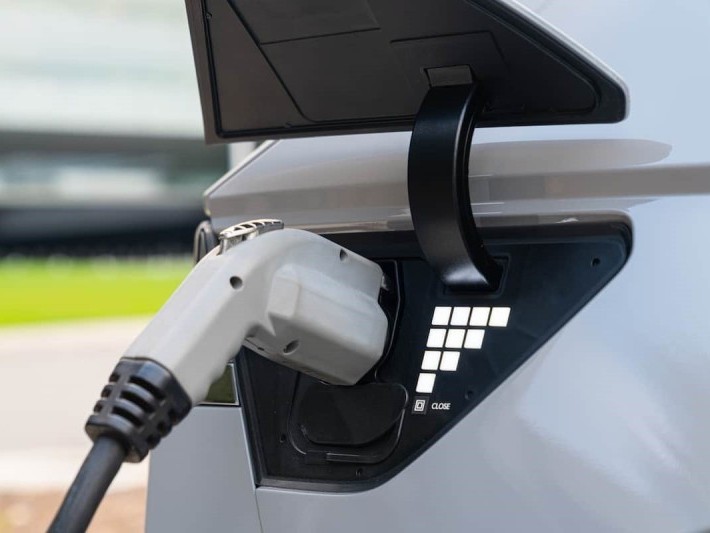
580,000 km & 87.7% Battery Health: Ioniq 5’s Incredible Durability
MichaelMay 6, 2025

Revolutionizing Hybrids: Hyundai’s New System vs. Toyota's Hybrid System
Kevin WongApr 22, 2025
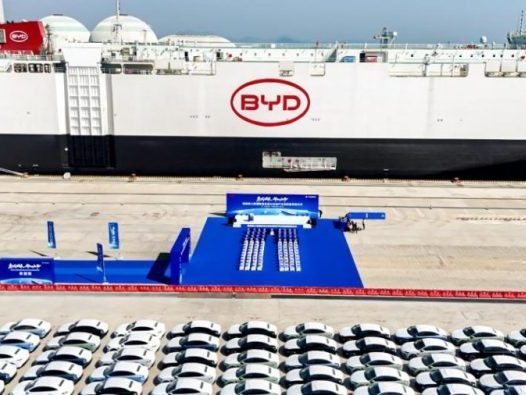
BYD Sets Global Sales Target of 5.5 Million Units for 2025
RobertMar 26, 2025
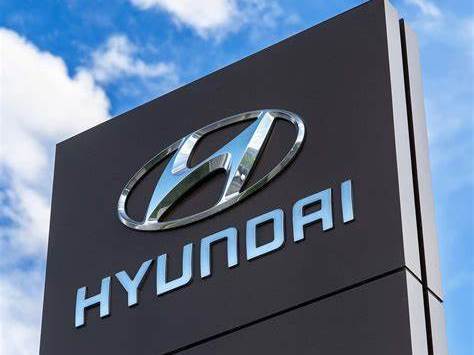
Hyundai is to launch an all-solid-state EV battery production line, but who's leading?
MichaelFeb 12, 2025
View More












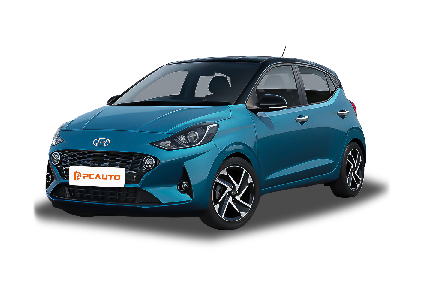
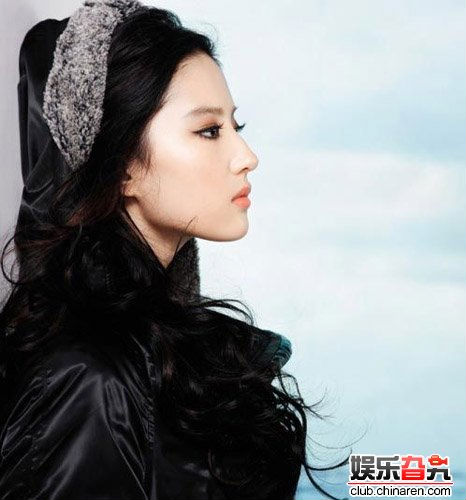



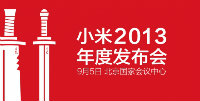
Pros
Cons